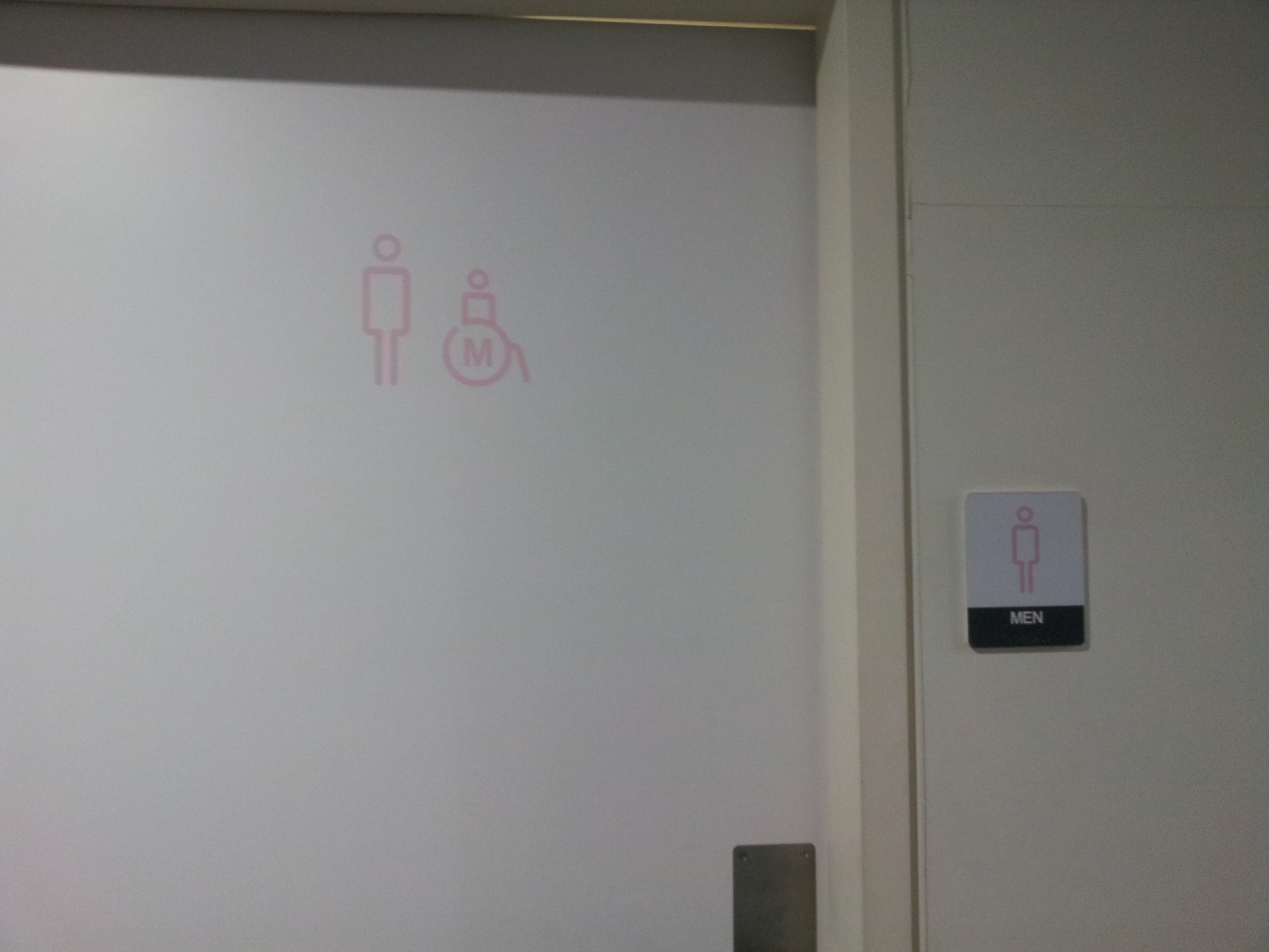Blue is for boys and pink is for girls. This color-gender association is strongly established in many countries. In a women’s university in Korea, however, signs for men’s rooms and for ladies’ rooms are both colored in pink. My friend said that they use the same color to avoid any possible gender discrimination. Interestingly however, pink signs confuse men when searching for men’s room. Indeed, “men” needs to be written down on the door of men’s room.
This raises a series of interesting questions.
- First, does the different colors discriminate different genders?
- Second, if this is the case, should we sacrifice our color-based convenience in order to promote social justice?
- Third, if color-based convenience needs to be replaced with other coding systems, what are the other ways that do not discriminate gender? For instance, if the shape-gender association is a good candidate (below), how could we UN-learn the color-gender association and then learn the shape-gender association?
***
Reference
Scarpina, F., & Tagini, S. (2017). The stroop color and word test. Frontiers in psychology, 8, 557.
The literature on interference in the Stroop Color and Word Test, covering over 50 yrs and some 400 studies, is organized and reviewed. In so doing, a set of 18 reliable empirical findings is isolated that must be captured by any successful theory of the Stroop effect. Existing theoretical positions are summarized and evaluated in view of this critical evidence and the 2 major candidate theories, relative speed of processing and automaticity of reading, are found to be wanting. It is concluded that recent theories placing the explanatory weight on parallel processing of the irrelevant and the relevant dimensions are likely to be more successful than are earlier theories attempting to locate a single bottleneck in attention.




